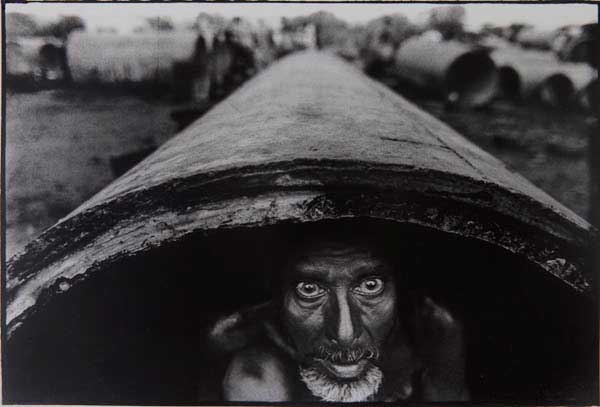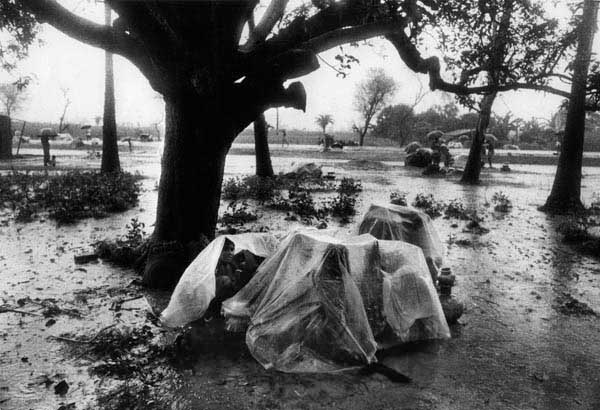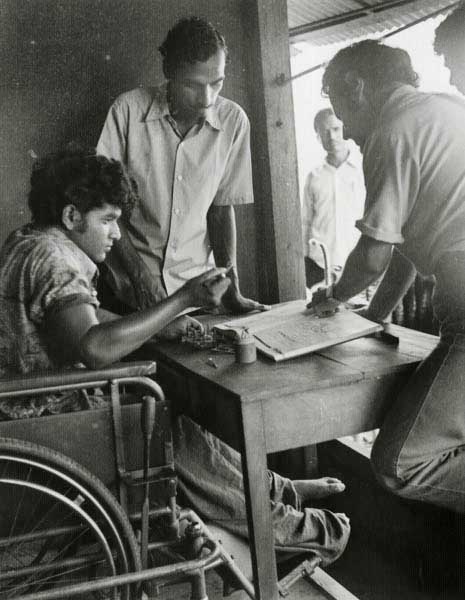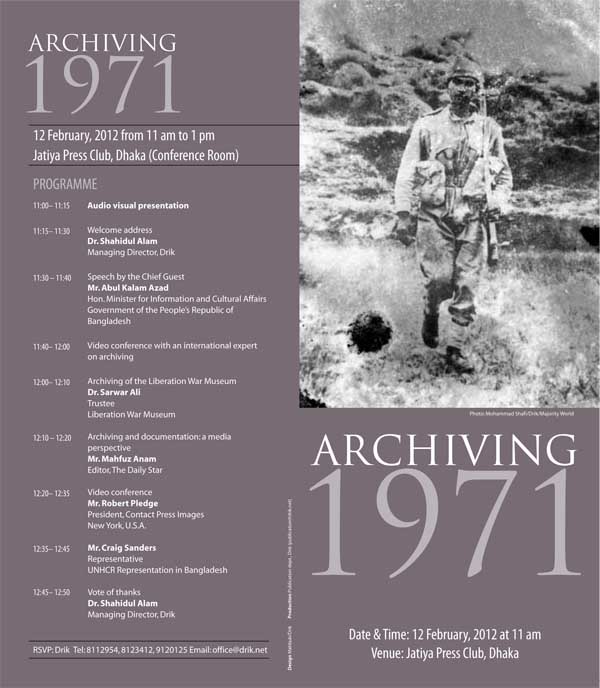(Editor’s introduction to “Birth Pangs of a Nation” produced to commemorate the 40th anniversary of the birth of Bangladesh and the 60 anniversary of the establishment of UNHCR.)
The Bangladeshi War of Liberation, like all other wars, has a contested history. The number killed, the number raped, the number displaced, are all figures that change depending upon who tells the story.

But in our attempt to be on the ?right side? of history, we often forget those who ended up on the wrong side. Those who have gone, those who were permanently scarred, mentally, physically, socially, don?t really care about our statistics. The eyes that stare into empty space, knowing not what they are searching, the frail legs, numbed by fatigue, drained by exhaustion, yet willed on by desperation, the wrinkled hands, seeking a familiar touch, a momentary shelter, longing for rest, do not care about the realpolitik of posturing superpowers.

Is a 40th anniversary more than a convenient round number in a never-ending cycle of the displacement of the weak? Is a 60th anniversary more than a celebration of a milestone amongst many, where brave men and women have stood by those in need, but watched in silence as the perpetrators of injustice continued in their violent ways, leaving them to deal with the fallout?

Continue reading “Songs of a Wounded Image”
Tag: Muktibahini
Archiving 1971
Date & Time: 12 February, 2012 from 11am to 1pm
Venue: Jatiya Press Club, Dhaka (Conference Room)
The programme will also be online live at www.drik.tv
History, at least in its initial form is generally written by the victor. But who is the victor in a war? How does one value a memory? What purpose does an artifact serve? Each archive is unique; its character shaped on those who set it up, and those who use it. From a photographer?s perspective, the war of 1971 was unique in other ways too. The events leading up to it were documented almost entirely by local photographers. They were themselves caught up in the struggles they were recording. It was not a story that international media neither knew nor was interested in. As such, the immediate aftermath of the crackdown on the 25th March was hardly recorded. For local photographers it was much too dangerous to be out there with a camera. Many of the foreign journalists were locked up in Hotel Intercontinental in Dhaka. It was only the few who managed to sneak out, or film through hotel windows that had tangible records of that fateful night. Others, who recorded those moments, were amateurs who took phenomenal risks in preserving the only visual records of the atrocities. Missing are the subtle nuanced observations. Ordinary people, trying to survive. The euphoria and hope of an expectant nation being replaced overnight by the terror of living under occupation, was a transformation that went unrecorded.
 Continue reading “Archiving 1971”
Continue reading “Archiving 1971”
